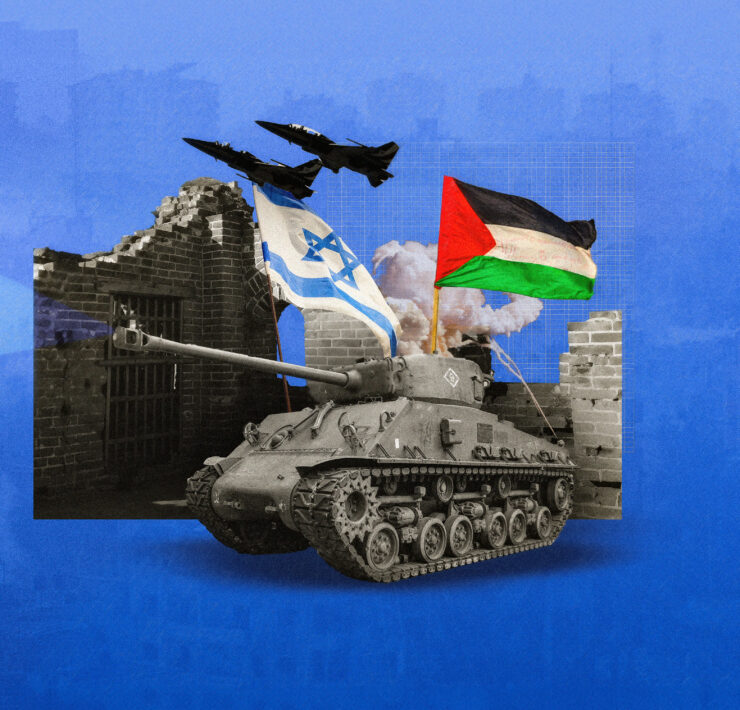May 12 began like any other day for 9-year-old Li Yao, a student in Shifang City in the northern part of China’s Sichuan Province. Like any other day, she had gone to school that morning, gone home for lunch and returned to school that afternoon. Around 2:30 p.m., shortly after class began again, something out of the ordinary happened that would change her life, along with the lives of everyone in that part of the country. The ground began to emit a low-frequency noise, and the entire building started to shake violently. Unbeknownst to the students, this was the onset of 2008’s Great Sichuan Earthquake, which would, in moments, decimate their city and kill an untold number of its inhabitants. All they knew was that the earth, some three stories below, was shaking. As she followed the rest of the students rushing to the door, Li was pushed from the crumbling building to the ground below.
Li’s story is, unfortunately, an increasingly common one. The Sichuan earthquake was the deadliest to hit China in more than 30 years, and though it will take some time before the dust settles and the numbers become more concrete, the death toll now looms at 68,500, with more than 360,000 injured. The quake is one in a series of stronger, more frequent natural disasters that have sprung up recently and driven the average impact of natural disasters up 13 times worldwide within the last 50 years. Already in 2008, ReliefWeb.int lists 37 natural disasters on their online database, and countless other, smaller ones—those not covered by news sources—quietly wreak havoc all over the world.
The increase in these disasters, coupled with today’s constant stream of media coverage, makes for a seemingly never-ending stream of grim news detailing death and destruction around the globe. This inundation can be overwhelming and bring a sense of helplessness.
But the news isn’t all bad. This surge of natural disasters has been met by an increased effort on the part of organizations who bring support and relief, along with comfort and hope, to those who are displaced, hurt and suffering. DisasterCenter.com lists more than 30 major U.S. disaster-relief organizations working tirelessly in every corner of the globe. Their aim, in the words of Rachel Wolff, part of World Vision’s disaster response team, is “to save lives—to provide help as urgently as possible that will not only save lives but also help survivors rebuild their lives.”
These agencies provide multiple ways to get involved. Organizations such as Samaritan’s Purse provide training to mobilize volunteers all over the world to bring relief to devastated areas. After the Great Sichuan Earthquake left thousands of people with no access to clean drinking water, volunteers from Samaritan’s Purse arrived and installed new water systems in these towns. In response to floods that swept across Romania in 2007, Operation Blessing International launched a back-to-school program that provided essential school supplies to families, as well as soup kitchens, clothing and food distributions, water wells and job training for orphans.
While the media attention is creating opportunities to aid these victims, other corners of the world suffer below the radar. These places, often referred to as “neglected emergencies,” have not, for whatever reason, received the media attention brought upon other areas. According to Wolff, “Most of the very serious humanitarian emergencies that are going on around the world are not reported very much at all in the press. It has all kinds of implications—if people don’t know, they’re not praying, they’re not giving, they’re not telling their friends—things are not changing.” For many of these places, the extreme loss of life brought about by disasters is exacerbated by the dire poverty already present. Because of this, many organizations seek to act pre-emptively by preparing the communities for potential disasters.
The ultimate goal is not to simply clean up after a disaster, but to be in communities, helping to build for long-term purposes by teaching strategies and implementing measures to be used after disaster strikes, in hopes of lessening the effects of tragedy and ultimately saving lives. “It’s really a cycle,” Wolff says. “When we go into a community, we look at what they need. We talk to them and say, ‘What are your priorities?’ Then, at any point along the way, they may experience an emergency, so we respond. As we move gradually from those first few weeks or months of emergency aid, we want to help families get back to that starting point before that storm or earthquake hit them. We say, ‘OK, we’re out of crisis mode now; let’s continue to work to get you back on the path toward development, to improving your lives, to helping your children stay alive past the age of 5, helping them get educated, helping you earn more income to send your children to school.’”
One example of this can be seen from Cyclone Sidr, which struck Bangladesh in November 2007 with top wind speeds of 160 miles per hour and lasted six days. World Vision personnel had already been working in the area for years, teaming with the government to build storm shelters and educate the community. “We trained the community so that they know, when the alarm goes off, what to do, where to go, how to get help,” Wolff says. “All of that together helped save thousands of lives in the cyclone.”
Even as manpower and monetary donations are integral parts of disaster relief, these organizations also ask for prayer. They recognize that physical needs must be met, but prayer is key to their goal of ending suffering and bringing hope to the people who need it most.
After falling from the school, Li Yao’s parents found her, miraculously unscathed, in the rubble that had, just moments before, been her school. With their home destroyed, the Lis walked out of the mountains to seek help, passing collapsed houses and bodies by the roadside. Eventually, they were picked up by a relief truck and taken to a temporary shelter at Shifang City with more than 1,000 other survivors, where a swath of relief organizations were there to provide assistance.
Because of efforts by organizations like World Vision and Samaritan’s Purse, more and more stories like Li Yao’s have a chance at a happy ending.
Want to help, but don’t know where to start? Overwhelmed by all the seemingly never-ending needs? Know that every little bit makes a difference. Here we’ve put together a short list of organizations (there are plenty more you can find with just a few quick Google searches) that seek to provide relief in areas affected by natural disasters.
Samaritan’s Purse
www.samaritanspurse.org
A worldwide, nondenominational Christian organization, Samaritan’s Purse aims to reach hurting people around the world with food, medicine and other assistance.
Operation Blessing
www.ob.org
Operation Blessing is an international relief and humanitarian organization whose goal is to demonstrate God’s love by alleviating human need and suffering in the United States and around the world by providing food, clothing, shelter, medical care and other basic necessities of life.
The United Methodist Committee on Relief (UMCOR)
new.gbgb-umc.org
A humanitarian agency providing relief in disaster areas, aid to refugees, food for the hungry and assistance to the impoverished, the United Methodist Committee on Relief also maintain a corps of trained disaster specialists who can respond quickly to disasters and keeps a supply of relief materials for emergency dispatch.
Christian Reformed World Relief Committee (CRWRC)
http://www.crwrc.org
Christian Reformed World Relief Committee works with people in 30 countries doing “community transformation” to help overcome illiteracy, hunger, malnutrition, unemployment, HIV/AIDS, child mortality, injustice and other issues.
Food for the Hungry International
www.fhi.net
Food for the Hungry International serves to educate people about the physical and spiritual hungers across the globe, sending people to share Christ’s love and facilitating emergency relief and sustainable development in areas that need it.
The International Rescue Committee
www.theirc.org
The International Rescue Committee is a global network of people working to provide access to safety, sanctuary and sustainable change for millions of people whose lives have been shattered by violence and oppression.
World Relief
www.worldrelief.org
Working across a wide cross-section of needs, including disaster response, human trafficking, child development, microfinance and immigrant services, World Relief works to empower and equip local churches all over the world on a grassroots level.
Church World Service
www.churchworldservice.org
A cooperative ministry of 35 Protestant, Orthodox and Anglican denominations, Church World Service provides sustainable self-help and development, disaster relief and refugee assistance in some 80 countries.
World Vision
www.worldvision.org
Seeking to transform the lives of the world’s poorest children and families, World Vision works with community leaders to set goals that families can achieve. World Vision volunteers and staff also provide emergency assistance during disasters by pre-positioning supplies for immediate response and remaining after the crisis to restore communities.




















